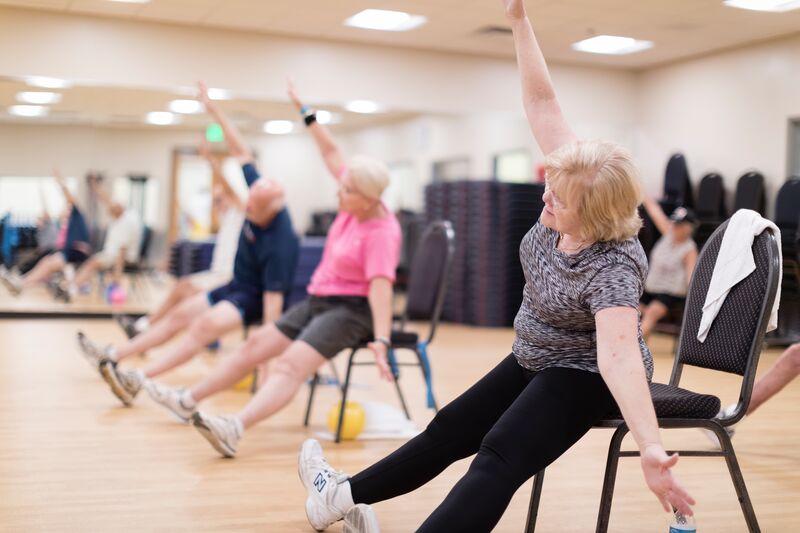Recovering from an injury or surgery often requires patience, consistency, and safe movement. While many rehabilitation programmes focus on physiotherapy, gentle exercise can also play a valuable role in restoring mobility and confidence. One effective option for individuals with limited range of motion is chair yoga. By adapting traditional yoga poses into a seated format, this practice allows patients to rebuild strength, enhance flexibility, and manage stress during recovery.
Why Rehabilitation Needs Gentle and Supported Practices
Healing after injury or surgery is a gradual process. The body requires careful movement to avoid strain while still maintaining circulation and mobility. Traditional forms of exercise may be too intense, and immobility can delay healing. Chair yoga bridges this gap by offering a middle ground where movement is safe, guided, and effective.
The Risks of Complete Inactivity
-
Stiff joints and reduced flexibility
-
Muscle weakness from lack of use
-
Poor circulation that slows healing
-
Increased emotional stress and frustration
The Value of Safe Movement
Engaging in gentle activity like chair yoga keeps muscles engaged without putting unnecessary stress on healing areas. It helps prevent stiffness, maintains functional strength, and supports the recovery journey both physically and mentally.
Benefits of Chair Yoga in Rehabilitation
Enhances Flexibility
Even while seated, patients can perform gentle stretches for the neck, shoulders, spine, and legs. These movements help prevent stiffness, especially in those recovering from joint surgeries such as knee or hip replacements.
Builds Strength Gradually
Chair yoga uses body weight rather than external resistance. Simple movements, like seated leg lifts or arm extensions, rebuild strength slowly and safely without the risk of overexertion.
Improves Circulation for Faster Healing
Deep breathing combined with movement enhances blood flow. This promotes delivery of oxygen and nutrients to healing tissues, which supports recovery.
Reduces Pain through Relaxation
Breathwork and mindful stretches in chair yoga stimulate the body’s relaxation response. This reduces muscle tension, lowers pain perception, and promotes comfort during rehabilitation.
Supports Mental Health During Recovery
Injuries and surgeries can be emotionally draining. Chair yoga incorporates mindfulness and breathing practices that calm anxiety and give patients a sense of progress, even when recovery feels slow.
Examples of Chair Yoga Practices in Rehabilitation
-
Seated Shoulder Rolls: Loosens tightness in the shoulders after prolonged immobility.
-
Gentle Spinal Twist: Restores spinal flexibility and aids digestion, which can be affected by medications.
-
Seated Knee Extension: Strengthens thigh muscles after lower limb surgeries.
-
Ankle Circles: Encourages circulation and prevents stiffness in the feet.
-
Forward Fold with Support: Stretches the back gently while calming the nervous system.
These poses can be adjusted in intensity based on a patient’s mobility level and medical advice.
The Role of Chair Yoga Alongside Physiotherapy
Chair yoga does not replace medical rehabilitation but complements physiotherapy. It provides additional benefits by focusing on holistic wellness, including mental and emotional health. Physiotherapists may even recommend chair yoga as a supplementary activity for patients who want to stay active between therapy sessions.
Safety Considerations for Patients
-
Always seek clearance from a healthcare professional before beginning chair yoga after surgery or injury.
-
Start with short sessions of 5 to 10 minutes and gradually increase.
-
Use a sturdy, stable chair without wheels for safety.
-
Avoid movements that put pressure on surgical areas or cause pain.
-
Consider guided sessions with trained instructors to ensure proper technique.
Psychological Benefits of Chair Yoga in Recovery
Builds Confidence
Injuries often leave patients feeling limited. Chair yoga provides a safe way to move, reminding them of their body’s capability and encouraging confidence in their recovery.
Manages Stress and Anxiety
Deep breathing and mindfulness lower cortisol levels. This is important for patients dealing with uncertainty and the frustration of slow progress.
Improves Sleep
Stress and pain can disrupt rest. Gentle evening chair yoga routines calm the body, preparing it for deeper and more restorative sleep.
How Singaporeans Can Integrate Chair Yoga into Recovery
At Home
Patients can practise chair yoga from their living rooms without needing special equipment. This convenience is crucial for those who may find travel to rehabilitation centres difficult.
In Hospitals or Clinics
Some rehabilitation programmes may include chair yoga sessions as part of holistic recovery. Group sessions can also provide motivation and peer support.
As a Long-Term Habit
Even after recovery, chair yoga remains beneficial for maintaining flexibility, posture, and stress relief. Many patients continue practising it as part of their lifelong wellness routine.
Professional Support and Resources
Joining guided sessions ensures safety and progression. Studios such as Yoga Edition provide structured programmes that are suitable for people in different stages of fitness and mobility. This professional support helps ensure patients are practising effectively without risking further injury.
FAQs on Chair Yoga in Rehabilitation
Q. Can I start chair yoga immediately after surgery?
A. It depends on the type of surgery. Always consult your doctor or physiotherapist first. Some movements may only be safe after a certain stage of healing.
Q. Is chair yoga painful during recovery?
A. No. Chair yoga should never cause sharp pain. Gentle discomfort is normal as muscles stretch, but any significant pain means the movement should be stopped.
Q. How often should I practise chair yoga during rehabilitation?
A. Short daily sessions of 10 to 15 minutes are effective. Frequency is more important than duration for building strength and flexibility safely.
Q. Can chair yoga help with balance after an injury?
A. Yes. Many poses improve core strength and coordination, which support better balance during rehabilitation.
Q. Will chair yoga slow down my physiotherapy results?
A. No. When approved by your healthcare provider, chair yoga complements physiotherapy by keeping your body active and your mind relaxed between medical sessions.

